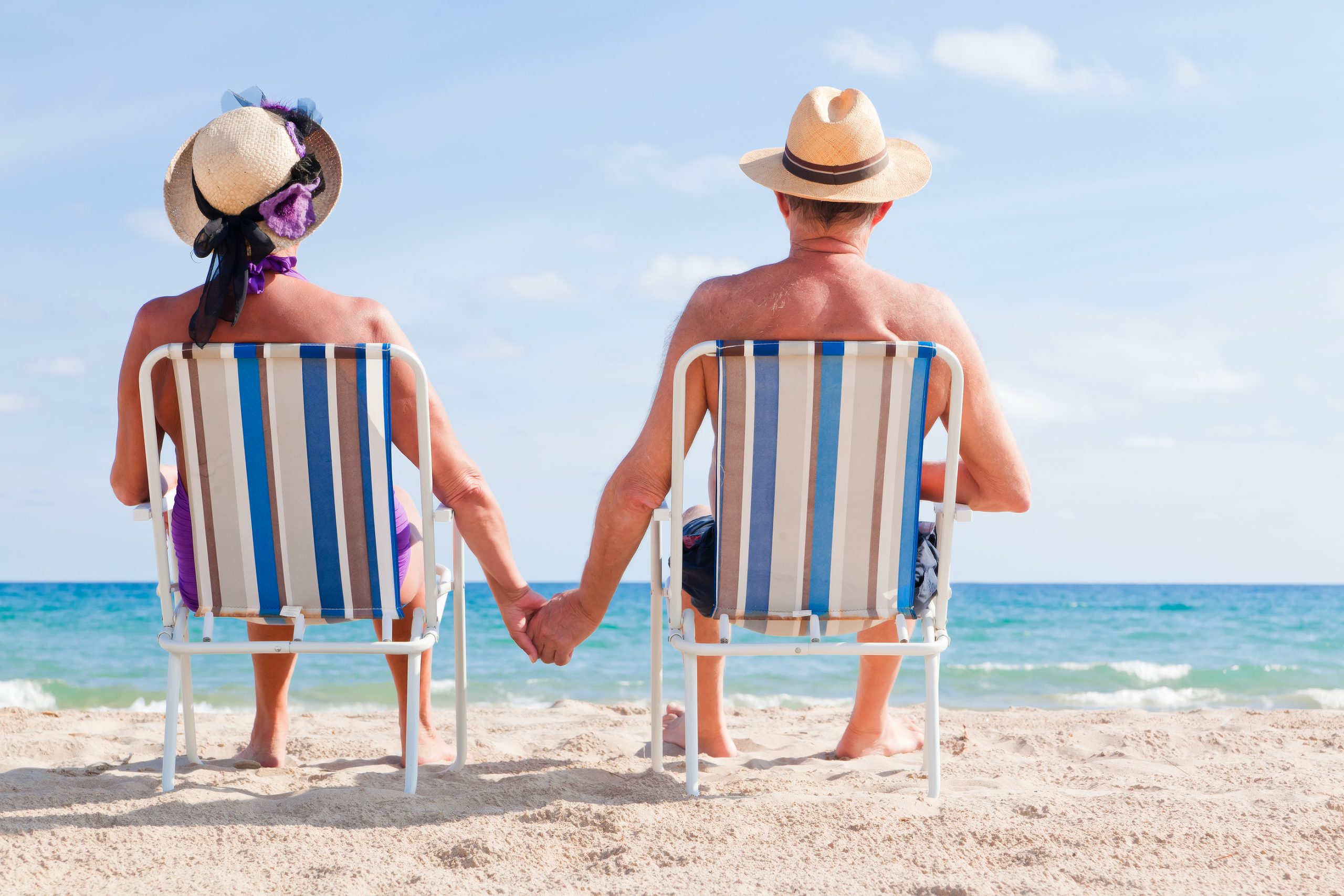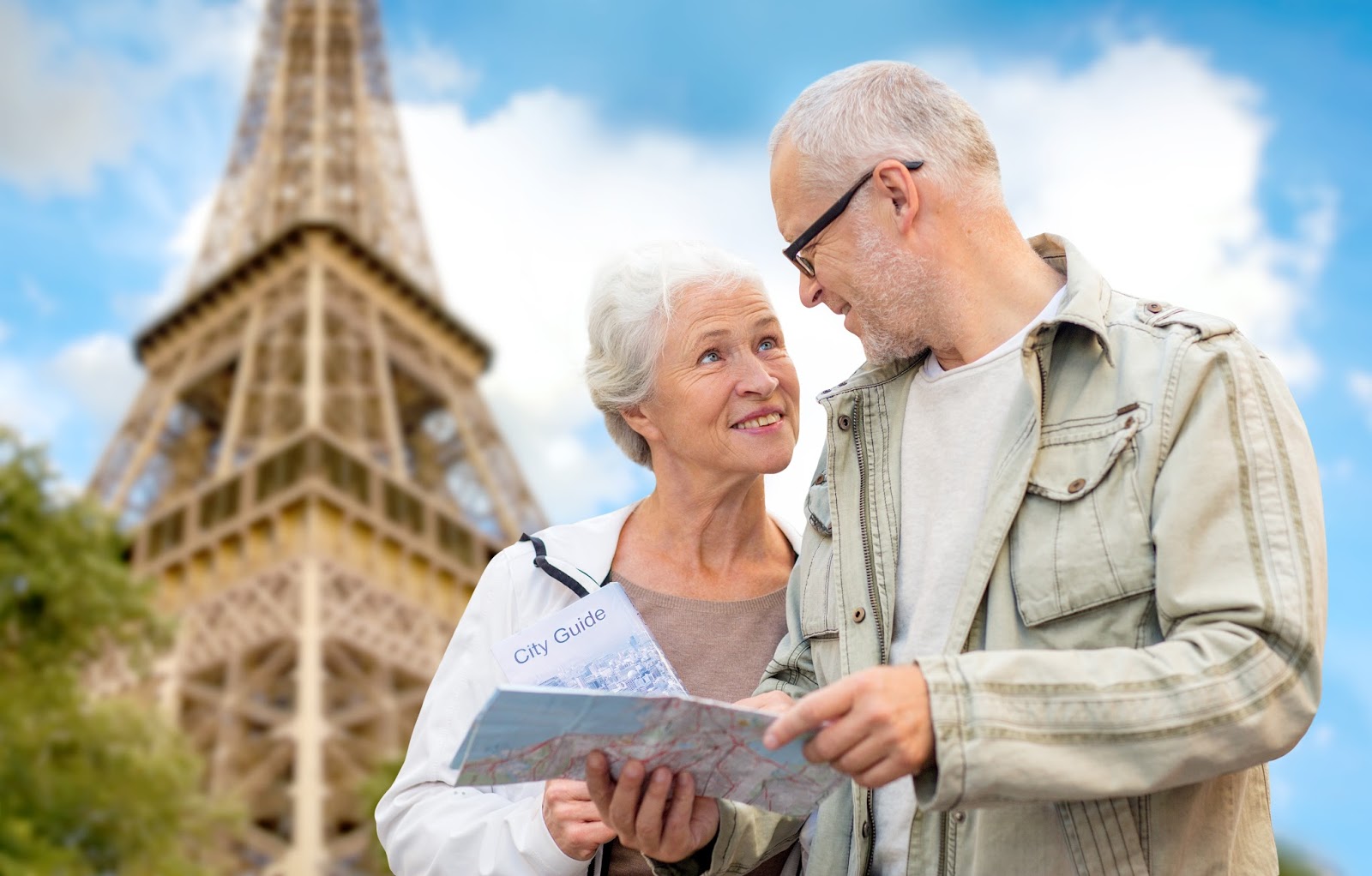Trips for single seniors are no longer a distant dream; they’re a burgeoning trend, empowering older adults to explore the world on their own terms. This guide delves into the exciting possibilities, addressing practical concerns and offering inspiration for unforgettable journeys. Whether seeking adventurous escapades or tranquil retreats, single seniors can find fulfilling travel experiences tailored to their unique needs and preferences.
From meticulous planning and budget considerations to ensuring safety and maximizing social interaction, this comprehensive resource provides valuable insights and actionable advice. Discover diverse trip types, ideal destinations, and practical tips to make solo senior travel both enriching and secure.
Types of Trips
Choosing the right travel experience is crucial for single senior travelers, ensuring both enjoyment and safety. Factors such as physical capabilities, social preferences, and budget significantly influence the ideal trip type. This section categorizes suitable trips based on activity levels and provides examples to aid in decision-making.
Trip Types Categorized by Activity Level
The following table Artikels various trip options tailored to different activity levels and interests. Careful consideration of personal fitness and social comfort levels is paramount in selecting the most appropriate journey.
| Relaxing | Cultural | Adventurous | Active |
|---|---|---|---|
| Luxury Cruise: Caribbean Islands | Guided Tour: Historical Sites of Rome | Trekking Tour: Peruvian Andes | Cycling Tour: Tuscan Countryside |
| Spa Retreat: Sedona, Arizona | Cooking Class: Tuscany, Italy | Wildlife Safari: Tanzania | Kayaking Trip: Apostle Islands |
| Beach Vacation: Florida Keys | Museum Hopping: London, England | Whitewater Rafting: Colorado River | Hiking Tour: Yosemite National Park |
Relaxing Trips: Examples and Considerations
Relaxing trips prioritize rest and rejuvenation. A Caribbean cruise, for example, offers onboard amenities, shore excursions, and ample downtime. A spa retreat provides opportunities for pampering and stress reduction. Potential challenges include potential boredom for those who prefer more active holidays and the higher cost associated with luxury accommodations. However, the benefits of reduced physical strain and enhanced relaxation are significant for many single seniors.
Cultural Trips: Examples and Considerations
Cultural trips focus on immersion in different cultures and historical contexts. A guided tour of Rome allows exploration of ancient ruins and iconic landmarks. A cooking class in Tuscany offers a hands-on experience with local cuisine and traditions. Potential challenges include navigating unfamiliar environments, language barriers, and potentially strenuous walking. However, the enriching experiences and exposure to new perspectives make these trips highly rewarding for intellectually curious seniors.
Adventurous Trips: Examples and Considerations
Adventurous trips offer thrilling experiences and opportunities for physical challenges. A trekking tour in the Peruvian Andes requires physical endurance and adaptability. A wildlife safari in Tanzania offers encounters with exotic animals but necessitates careful planning and preparation. Potential challenges include physical exertion, altitude sickness (in some cases), and potential safety risks. However, the sense of accomplishment and unforgettable memories make these trips worthwhile for active seniors seeking unique experiences.
Active Trips: Examples and Considerations
Active trips incorporate moderate physical activity while still allowing for relaxation and exploration. A cycling tour through Tuscany combines scenic routes with physical activity. A kayaking trip in the Apostle Islands offers a unique perspective of the natural landscape. Potential challenges include maintaining stamina and adapting to changing weather conditions. However, these trips offer a balance between physical activity and exploration, providing a satisfying and invigorating experience.
Destination Selection
Choosing the perfect destination for a single senior’s trip requires careful consideration of several key factors. A well-planned trip ensures a safe, enjoyable, and enriching experience, maximizing relaxation and minimizing stress. This section will guide you through the decision-making process, highlighting popular destinations and comparing their associated costs.
Decision-Making Flowchart for Destination Selection
The selection of an ideal travel destination hinges on a senior’s individual preferences, financial resources, and physical capabilities. A structured approach, such as a flowchart, can streamline this process.
The flowchart would begin with a starting point: “What are your primary interests (e.g., history, nature, culture, relaxation)?” This would branch into different options: History buffs might proceed to a path focusing on historical sites; nature lovers, to a path focusing on national parks; and those seeking relaxation, to a path emphasizing spas and resorts. Each path would then involve further branching based on budget (Luxury, Mid-range, Budget-friendly) and physical capabilities (High mobility, Moderate mobility, Limited mobility).
The final nodes of the flowchart would present suitable destination suggestions based on the chosen paths. For example, a senior with high mobility, a mid-range budget, and an interest in history might be directed towards destinations like Prague or Rome. A senior with limited mobility, a budget-friendly approach, and an interest in relaxation might be suggested destinations closer to home, potentially involving shorter flights or even a car trip.
Popular Destinations for Single Seniors
Three popular destinations catering to the needs and interests of single senior travelers are Portugal, Costa Rica, and Sedona, Arizona.
These locations offer diverse experiences, balancing cultural immersion, natural beauty, and accessibility, making them suitable for a range of preferences and physical abilities. The following sections will detail their individual appeal and cost considerations.
Portugal: A Blend of History and Relaxation
Portugal offers a captivating blend of history, culture, and stunning coastal scenery. Lisbon, the capital city, boasts charming neighborhoods, historic trams, and delicious cuisine. The Algarve region provides beautiful beaches, golf courses, and opportunities for water sports. Smaller towns like Óbidos and Sintra offer a more tranquil pace, perfect for exploring ancient castles and picturesque landscapes. Portugal’s accessibility, with relatively flat terrain in many areas and well-maintained infrastructure, makes it suitable for seniors with varying mobility levels.
Investigate the pros of accepting senior vacations in your business strategies.
Costa Rica: Nature’s Embrace
Costa Rica is renowned for its biodiversity and stunning natural landscapes. From rainforests teeming with wildlife to pristine beaches and active volcanoes, the country offers a plethora of outdoor activities suitable for various fitness levels. Many eco-lodges and resorts cater specifically to seniors, providing accessible accommodations and guided tours tailored to their needs. Areas like La Fortuna (Arenal Volcano) and Manuel Antonio National Park offer a mix of adventure and relaxation, while the Guanacaste region boasts beautiful beaches ideal for leisurely strolls.
Sedona, Arizona: Spiritual Renewal and Scenic Beauty
Sedona, nestled in the red rock country of Arizona, offers a unique blend of natural beauty and spiritual energy. The vibrant red rock formations provide breathtaking views and opportunities for hiking (with various difficulty levels), while the town itself offers a variety of art galleries, spas, and wellness centers. Sedona’s accessibility, with many paved trails and readily available transportation, makes it a suitable destination for seniors with varying mobility levels.
The dry, sunny climate is also appealing to many seniors.
Cost of Living and Travel Expenses Comparison
The cost of living and travel expenses vary significantly between these three destinations. Portugal generally offers a more budget-friendly option compared to Costa Rica, especially regarding accommodation and food. Sedona, while potentially offering shorter travel distances for some North American seniors, can have higher accommodation costs compared to both Portugal and Costa Rica.
For example, a mid-range hotel room in Lisbon might cost between $80-$150 per night, while a similar room in a popular area of Costa Rica could range from $100-$250. In Sedona, the cost might be even higher, potentially exceeding $200 per night depending on the season and location. Food costs are also higher in Costa Rica and Sedona compared to Portugal.
Transportation costs will depend on the chosen mode of transport (rental car, taxis, public transportation), but generally, Portugal and Sedona offer more accessible and affordable public transportation options than Costa Rica. These are estimates and actual costs may vary based on travel season, specific choices, and personal spending habits.
Safety and Security
Solo travel for seniors offers incredible opportunities for adventure and self-discovery, but prioritizing safety and security is paramount. A well-planned trip, coupled with proactive measures, can significantly mitigate risks and ensure a worry-free experience. This section Artikels essential safety precautions and strategies for a secure journey.
Pre-Trip Safety Checklist, Trips for single seniors
Careful preparation before departure is crucial for a safe trip. Failing to plan adequately can lead to unforeseen complications and compromises safety. The following checklist highlights key steps to take before embarking on your adventure.
- Inform family and friends of your itinerary, including flight details, accommodation addresses, and planned activities. Share contact information for emergency contacts.
- Make copies of important documents, such as your passport, driver’s license, travel insurance policy, and credit cards. Store these copies separately from the originals.
- Consult your doctor regarding necessary vaccinations, medications, and any health precautions specific to your destination. Pack a comprehensive first-aid kit.
- Research your destination thoroughly, paying attention to local laws, customs, and potential safety concerns. Familiarize yourself with emergency contact numbers for your destination.
- Register with your country’s embassy or consulate in your destination country. This allows them to contact you in case of emergencies.
- Notify your bank and credit card companies of your travel dates to avoid any issues with transactions.
Avoiding Scams and Ensuring Personal Safety
Travel scams target vulnerable individuals, and seniors traveling alone may be particularly susceptible. Awareness and vigilance are key to avoiding these pitfalls.
Common scams include overcharging for services, fake tour guides, and fraudulent money exchange operations. To mitigate these risks, it’s crucial to:
- Research reputable tour operators and transportation services in advance.
- Use official currency exchange services and avoid informal exchanges.
- Be wary of unsolicited offers and overly friendly strangers.
- Trust your instincts; if something feels wrong, it probably is. Don’t hesitate to walk away from a situation that makes you uncomfortable.
- Avoid displaying large amounts of cash or expensive jewelry.
- Keep valuables secure, using hotel safes and money belts.
Travel Insurance for Senior Travelers
Comprehensive travel insurance is vital for senior travelers, providing financial protection against unexpected events. Standard policies often exclude or limit coverage for pre-existing medical conditions, so it’s crucial to find a plan that addresses these specific needs.
Senior-specific travel insurance policies typically offer:
- Medical emergency coverage: This covers hospitalization, medical evacuation, and repatriation costs.
- Trip cancellation or interruption insurance: This protects against financial losses due to unforeseen circumstances, such as illness or natural disasters.
- Baggage loss or delay coverage: This covers the cost of replacing lost or delayed luggage.
- Emergency assistance services: This provides 24/7 access to assistance with medical emergencies, legal issues, and other unforeseen problems.
It’s advisable to compare policies from different providers to find the best coverage at a reasonable price. Consider factors such as pre-existing condition coverage, medical evacuation limits, and the level of emergency assistance provided. Remember to read the policy carefully before purchasing to understand the terms and conditions.
Social Interaction and Companionship: Trips For Single Seniors
Solo travel for seniors offers incredible opportunities for self-discovery and independence, but addressing potential loneliness is crucial for a fulfilling experience. Many seniors find that the benefits of travel far outweigh any concerns about being alone, and proactive strategies can significantly enhance social interaction and companionship throughout the journey.Finding travel companions or joining group tours specifically designed for seniors can alleviate feelings of isolation and provide built-in social opportunities.
These groups offer shared experiences and the chance to connect with like-minded individuals who understand the unique perspectives and needs of older travelers.
Finding Travel Companions and Group Tours
Several avenues exist for single seniors seeking travel companions or group tours. Websites and organizations specializing in senior travel often feature options for joining pre-formed groups or connecting with other solo travelers interested in similar destinations or activities. Many tour operators cater exclusively to the 55+ demographic, offering itineraries tailored to the interests and physical abilities of older adults.
These tours often incorporate opportunities for social interaction, such as group dinners, shared excursions, and optional social activities. Local senior centers and community organizations may also offer travel programs or connect individuals with others interested in group travel. Cruises are another popular option, offering a built-in social environment with numerous opportunities for interaction.
Strategies for Making New Friends While Traveling
Initiating conversations and building connections while traveling solo requires a proactive approach. Staying in accommodations with shared common areas, such as hostels or guesthouses designed for mature travelers, can provide opportunities to meet other guests. Participating in organized tours and activities offers a natural setting for interaction with fellow travelers. Joining walking tours, cooking classes, or other group excursions provides shared experiences and conversation starters.
Simply striking up a conversation with fellow travelers while waiting for a bus or enjoying a meal can lead to unexpected friendships. Being open, friendly, and approachable significantly increases the likelihood of making new connections. Remember, many other travelers are also looking to connect with others.
Overcoming Loneliness and Maintaining a Positive Mindset
Loneliness during solo travel can be mitigated through careful planning and a proactive attitude. Scheduling regular contact with loved ones back home helps maintain a sense of connection. Keeping a travel journal can serve as a therapeutic outlet for processing experiences and reflecting on personal growth. Engaging in activities that foster a sense of accomplishment, such as learning a new skill or mastering a local language, can boost self-esteem and confidence.
Focusing on the positive aspects of the journey, such as the beauty of the scenery or the delicious food, helps maintain a positive mindset. Remembering that solo travel is an opportunity for self-discovery and personal growth can transform feelings of loneliness into a sense of empowerment and accomplishment. Consider pre-booking some activities or tours to avoid periods of inactivity which can lead to feelings of isolation.
Packing Essentials

Packing strategically is paramount for a smooth and enjoyable trip for single senior travelers. Careful consideration of comfort, safety, and health needs will minimize stress and maximize the experience. Overpacking is a common pitfall, leading to fatigue and potential injury. This section Artikels essential items and efficient packing strategies.
A well-planned packing list is crucial for stress-free travel. Remember to check weather forecasts for your destination and adjust accordingly. Consider the activities you’ll be undertaking and pack versatile items that can be layered for varying temperatures.
Essential Packing List for Single Senior Travelers
The following list prioritizes comfort, safety, and health considerations, tailored for solo senior travelers. Remember to personalize this list based on individual needs and specific trip requirements. Consider any pre-existing medical conditions and necessary medications.
- Comfortable, supportive walking shoes: At least two pairs, one for everyday wear and one for backup.
- Lightweight, breathable clothing: Layers are key for adapting to changing temperatures. Pack neutral-colored items that can be easily mixed and matched.
- Medications: Bring a sufficient supply of all prescription and over-the-counter medications, including copies of prescriptions.
- First-aid kit: Include bandages, antiseptic wipes, pain relievers, and any personal medical supplies.
- Toiletries: Travel-sized containers are essential to save space and comply with airline regulations.
- Personal identification and travel documents: Keep copies separate from originals and consider scanning documents to cloud storage.
- Small backpack or day bag: Useful for carrying essentials during day trips.
- Comfortable travel pillow: For improved sleep on planes, trains, or buses.
- Portable charger: Essential for keeping electronic devices powered up.
- Reusable water bottle: Staying hydrated is crucial, especially in warmer climates.
Importance of Comfortable and Supportive Footwear and Clothing
Selecting comfortable and supportive footwear and clothing is vital for senior travelers. Proper footwear reduces the risk of falls and foot problems, which can significantly impact mobility and enjoyment. Similarly, comfortable clothing allows for ease of movement and prevents chafing or discomfort during long days of sightseeing or travel.
For footwear, consider well-cushioned shoes with good arch support and a non-slip sole. Avoid new shoes; break them in before the trip to prevent blisters. For clothing, choose breathable fabrics that wick away moisture, such as cotton or linen. Loose-fitting clothing allows for better air circulation and comfort, especially in warmer climates. Layering clothing allows for adapting to changing temperatures throughout the day.
Efficient Packing Techniques to Avoid Overpacking
Overpacking is a common issue for travelers, particularly seniors who may have concerns about needing specific items. Careful planning and efficient packing techniques can help minimize luggage weight and maximize space. Consider using packing cubes to organize clothing and compress items, and roll clothing instead of folding to save space.
Prioritize versatile items that can be worn multiple times and choose clothing in neutral colors that can be mixed and matched. Create a packing list in advance and check off each item as it’s packed. This helps ensure nothing is forgotten and avoids unnecessary duplication. Consider purchasing travel-sized toiletries to save space and weight.
Embarking on a solo adventure as a senior is an empowering testament to a spirit of exploration and independence. With careful planning, a focus on safety, and an open heart for new experiences, single seniors can unlock a world of opportunities for personal growth and unforgettable memories. This guide serves as a roadmap, empowering you to navigate the logistics, embrace the challenges, and ultimately, enjoy the rewards of travel tailored to your unique needs and desires.


:max_bytes(150000):strip_icc()/21524-1956f0a1fb7344839e74f55b3485335f.jpg)

